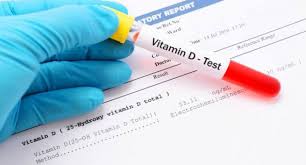Vitamin D is a nutrient that is essential for healthy bones and teeth. There are two forms of vitamin D that are important for nutrition: vitamin D2 and vitamin D3. Vitamin D2 mainly comes from fortified foods like breakfast cereals, milk, and other dairy items. Vitamin D3 is made by your own body when you are exposed to sunlight. It is also found in some foods, including eggs and fatty fish, such as salmon, tuna, and mackerel.
In your bloodstream, vitamin D2 and vitamin D3 are changed into a form of vitamin D called 25 hydroxyvitamin D, also known as 25(OH)D. A vitamin D blood test measures the level of 25(OH)D in your blood. Abnormal levels of vitamin D can indicate bone disorders, nutrition problems, organ damage, or other medical conditions.
Other names: 25-hydroxyvitamin D, 25(OH)D



 Contact Us
Contact Us







 Hospitals
Hospitals
 Doctors
Doctors
 Diagnostic
Diagnostic
 Pharmacy
Pharmacy
 Health Tips
Health Tips
 Blog
Blog

























Comments